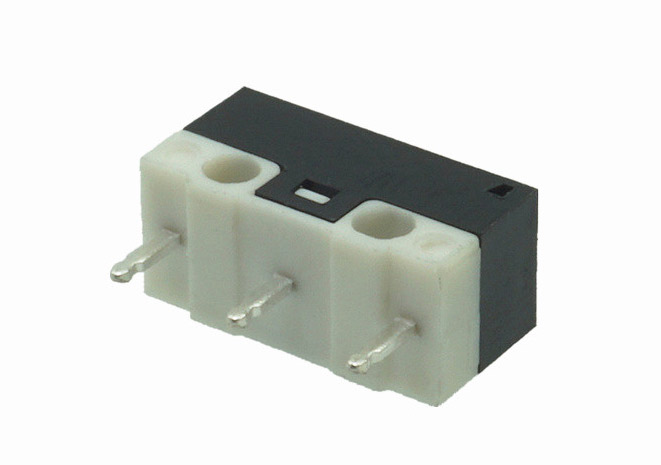Categorized by appearance:
Brake plunger type: There is a column at the top of the micro switch, and the device presses the column from the top to turn on the switch.
Sliding straight wheel type: There is a column at the top of the micro switch, and there is a roller on the column. The device presses the roller from the top to turn on the switch.
Swing bar swing bar with rollers: A swing bar with rollers extends laterally from the top of the micro switch, and the device presses down the swing bar from the top, that is, the switch is turned on.
Top small button type: A small button protrudes from the top of the micro switch, and the device presses the button from the top to turn on the switch.
Swing bar swing bar: A swing bar extends laterally from the top of the micro switch, and the device presses the swing bar from the top to turn on the switch.
Classified by performance:
Ordinary type: the most common micro switch, used in normal temperature and humidity environment.
High temperature type: In order to prevent the micro switch from being damaged in a high temperature environment, the general temperature exceeds 60 degrees and is used at 120 degrees.
Waterproof type: In order to prevent the micro switch from being damaged in wet and cold environment.
Explosion-proof type: mainly used in high dust environment.
Outdoor type: If the micro switch is used outdoors for a long time, it is very vulnerable to environmental hazards, so it should be sealed, waterproof and dustproof.

1. What is the reason for the poor contact of the micro switch? How to deal with it?
The first possibility is that dust adheres to metal sheets, switch contacts, etc. It is recommended to use sealed electric switches. The second is to suffer from the harm of malignant gases in the environment, resulting in the formation of an insulating covering film on the surface of the contacts. It is recommended to use a good adaptability to the environment. contact material (gold, alloy, etc.) of the switch.
2. What's the matter if the load does not turn on even if the micro switch is pressed?
There are several reasons for this problem. The first may be due to poor contact, the second may be that the contacts are melted, the third may be that the internal spring is damaged, the fourth may be that the operating speed is different, and the fifth may be the actual operation. The frequency is not the same, and the sixth is likely to adhere to waste and dust. The specific reason needs to be investigated.
3. What is the reason for the aging and burning of the insulation of the micro switch? How to prevent it?
1. The reason for the aging and burning of the micro switch is mainly because the capacity of the load is too large, which causes the electric isolation and the contact to fly around. This situation can be avoided by using relays and contactors to switch loads. Second, the high humidity causes a strong change in the surrounding temperature, resulting in the infiltration of water droplets. lead to carbonization of the insulation. In this case, minimize the long-term exposure of the micro switch in a humid environment, or choose a sealed switch.


